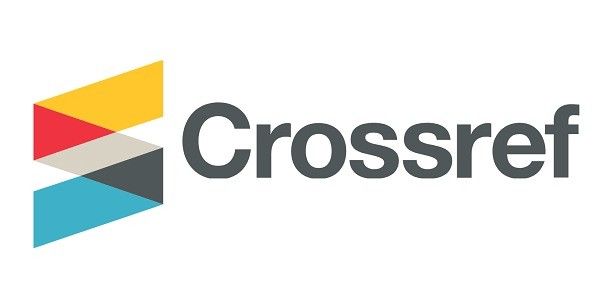Abstract
This paper explores the idea of a deep interior during an encounter between a sea tribe and the sea, as an intimate interaction between the body and nature that consists of liquid matter, the earth’s surface, and the sea inhabitants. This paper introduces the idea of intimate engagement with such a liquid environment to reveal its interiorisation. It arguably positions ecological understanding through reading and responding to nature as the key to interiorisation. This study learns about the livelihood of a sea tribe, Orang Suku Laut (OSL), in the Riau Archipelago, Indonesia, mainly through food hunting and gathering activities. Through the trajectories produced during food-sourcing activities, it is revealed that reading and responding to nature depends on the multiple layers of nature’s dynamic entities: physical features, climatic conditions and particular signs. The deep interior suggests a different spatial understanding and ways of inhabiting the world, constructing an intimate interiorisation with ecology.
Publication Date
7-30-2022
References
Atmodiwirjo, P., Johanes, M., Saginatari, D. P., & Yatmo, Y. A. (2018). Ecological aspects of the traditional brick making process in Pedurungan Kidul, Central Java. E3S Web of Conferences, 67, 04034. https://doi.org/10.1051/e3sconf/20186704034
Berkes, F., Colding, J., & Folke, C. (2000). Rediscovery of traditional ecological knowledge as adaptive management. Ecological Applications, 10(5), 1251. https://doi.org/10.2307/2641280
Bestari, R., Rohmah, T., Azzahra, T. S., Agustine, A., Sanaa, C., Frederika, G., Siti, H., Iqlil, S., & Yasmin, Z. H. (Eds.). (2020). Orang Suku Laut: Pengarung lautan beratap kajang: Catatan perjalanan mahasiswa arsitektur Universitas Indonesia. Departemen Arsitektur Fakultas Teknik Universitas Indonesia.
Bird-David, N. (1999). "Animism" revisited: Personhood, environment, and relational epistemology. Current Anthropology, 40(S1), S67–S91. https://doi.org/10.1086/200061
Brighenti, A. M., & Kärrholm, M. (2020). Animated lands: Studies in territoriology. University of Nebraska Press.
Chou, C. (2010). The Orang Suku Laut of Riau, Indonesia: The inalienable gift of territory. Routledge.
Crowe, S., Cresswell, K., Robertson, A., Huby, G., Avery, A., & Sheikh, A. (2011). The case study approach. BMC Medical Research Methodology, 11(1), 100. https://doi.org/10.1186/1471-2288-11-100
de Certeau, M. (1984). The practice of everyday life (S. Rendall, Trans.). University of California Press.
Garófalo-Khan, L. (2018). Sensorial interior landscapes. In G. Marinic (Ed.), The interior architecture theory reader (pp. 274–288). Routledge.
Goodbun, J., & Jaschke, K. (2012). Architecture and relational resources: Towards a new materialist practice. Architectural Design, 82(4), 28–33. https://doi.org/10.1002/ad.1424
Guibert, E. (2021). On the usefulness of modern animism: Co-creating architecture with soils as ontopolitical practice. GeoHumanities, 1–22. https://doi.org/10.1080/2373566X.2021.1904785
Hagan, S. (2015, March 16). Ecological urbanism. Architectural review. https://www.architectural-review.com/essays/ecological-urbanism
Harani, A. R., Atmodiwirjo, P., & Yatmo, Y. A. (2021). Interiorization: Spatial mechanism to generate interior condition in an urban kampung neighborhood. Alam Cipta, 14(2), 1–9.
Ingold, T. (2002). The perception of the environment: Essays on livelihood, dwelling and skill. Routledge. https://doi.org/10.4324/9780203466025
Ingraham, C. (2015). Foreword. In C. O'Donnell (Ed.), Niche tactics: Generative relationships between architecture and site (pp. xiii–xx). Routledge.
Leatherbarrow, D., & Wesley, R. (2019). Three cultural ecologies. Routledge.
Lenhart, L. (2008). Sea Nomads' mobile dwelling and settlements and their idea of place and space. In R. Schefold, P. Nas, G. Domenig, & R. Wessing (Eds.), Indonesian Houses: Volume 2: Survey of Vernacular Architecture in Western Indonesia (pp. 309-341). KITLV Pr.
O'Donnell, C. (2015). Niche tactics: Generative relationships between architecture and site.Routledge.
Paramita, K. D. (2022a). A sensorial foray into architecture. ARSNET, 2(1), 2-9.https://doi.org/10.7454/arsnet.v2i1.52
Paramita, K. D. (2022b). Passage territories: Reconstructing the domestic spatiality of an Indonesian urban kampung. In A. M. Brighenti & M. Kärrholm (Eds.), Territories, environments, politics: Explorations in territoriology (pp. 188–205). Routledge.
Pimlott, M. (2016). The public interior as idea and project. JAP SAM Books.
Scalbert, I., & Walker, S. (2010). The perfect worlds of ecology. Field Journal, 4(1), 11–16.
Standage, T. (2009). An edible history of humanity. Bloomsbury Publishing.
Steinberg, P., & Peters, K. (2015). Wet ontologies, fluid spaces: Giving depth to volume through oceanic thinking. Environment and Planning D: Society and Space, 33(2), 247–264.https://doi.org/10.1068/d14148p
Suryantini, R., Paramita, K., & Yatmo, Y. (2019). Investigating the food-based domestic materiality of Nuaulu people, Seram Island: The multiple roles of sago. Journal of Physics: Conference Series,1351, 012115. https://doi.org/10.1088/1742-6596/1351/1/012115
Treadwell, S. (2018). Oceanic interiorities. In G. Marinic (Ed.), The interior architecture theory reader (pp. 229–240). Routledge.
Tuan, Y. F. (1990). Topophilia: A study of environmental perception, attitudes, and values. Columbia University Press.
Tyszczuk, R., & Walker, S. (2010). Ecology. Field Journal, 4(1), 1–10.
Yatmo, A. Y., Paramita, K. D., Suryantini, R., & Atmodiwirjo, P. (2019). Cooking the material: Investigating the space of architecture material production in Central Java, Indonesia. Proceeding The 2nd ICSCI-Sustainable Energy, Environment, and Infrastructure toward Smart City Planning, 25–34.
Submitted Date
2022-06-30
Accepted Date
2022-07-25
First Page
197
Last Page
216
Recommended Citation
Suryantini, R., Saginatari, D. P., & Yatmo, Y. A. (2022). Deep Interior: Sensorial Encounters of Orang Suku Laut with the Sea. Interiority, 5 (2), 197-216. https://doi.org/10.7454/in.v5i2.232
Creative Commons License

This work is licensed under a Creative Commons Attribution-NonCommercial 4.0 International License
Author(s) retain the copyright of articles published in this journal, with first publication rights granted to Interiority.






